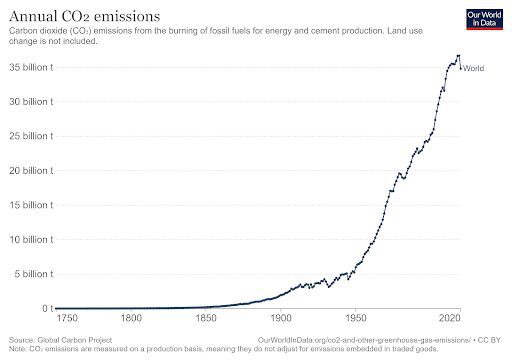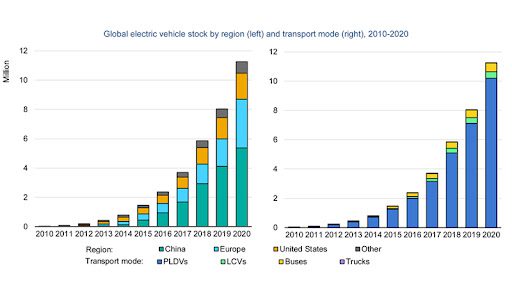As public consciousness of the environmental impact of CO2 production grows, more and more businesses are looking for ways to minimize carbon emissions and neutralize their carbon footprint.
An emphasis on environmental responsibility doesn’t have to be reserved for green tech companies or those pioneering the delivery of carbon-neutral consumer products. With the right application of technical, organizational, and operational solutions, all sorts of businesses have the opportunity to be at the forefront of the sustainability movement.
In this post, we’ll explore three areas where companies can make changes to reduce their carbon emissions and propose some actionable suggestions for doing so.
Choosing Business Partners
It’s a fundamental truth of commerce that all enterprises are socially and corporately tied to their trading partners. If your aim is to combat climate change, you must start by taking a critical look at the other organizations you do business with and ask yourself whether they adhere to the same values and ethos as your own company.

Of course, assessing the environmental credentials of a company is not necessarily an easy feat but this will help you to develop business acumen. Thankfully, carbon emissions offer a reasonably well-founded basis for passing judgment on the climate impact of a given business.
There are a growing number of tools and surveys available to help you with this challenge. For example, Trucost publishes a yearly State of Green Business report, including their Green Business Index. The index looks at the business practices of thousands of companies around the world over the past five years. It tracks a variety of metrics, including those related to carbon emissions.
Policy and legislation are also making it easier to choose low-carbon or carbon-neutral business associates. Since 1997 there has been a 20-fold increase in the number of laws passed globally related to climate change.
As climate change legislation is rolled out in an ever-growing number of countries, transparent carbon reporting is increasingly becoming a business norm. With more information available, you can reduce your own carbon footprint by using this knowledge to inform your business decisions and the partners with which you choose to work.
Logistics and Operations
Industries, such as manufacturing and shipping, that rely on complex supply chains and are still largely dependent on fossil fuels are the biggest carbon emitters. But that also means they have the most scope to improve.
Reducing your organization’s dependency on fossil fuels is one of the most significant ways to minimize carbon emissions. There are two main ways that businesses can do this: 1) channeling investment towards green technologies and 2) having the correct policies in place to boost energy efficiency across your operations.
Just like everyday technologies such as mobile apps are used increasingly by individuals to monitor and offset their carbon emissions, different technological solutions have been developed to help businesses minimize their CO2 footprint.
Solutions vary from sector to sector, but typically reducing carbon emissions involves updating older, inefficient technologies with new, greener alternatives.
If it was once an expensive option with a questionable impact on overall carbon emissions, switching to electric vehicles now makes both environmental and financial sense for many companies. This is partly due to advances in electric motor technology and the popularization of low emissions zones in Europe, China, and Japan.

Besides deploying electric vehicles in your logistics and distribution networks, the other big upgrade you can make as a business is to your facilities and infrastructures. For example, the CO2 emissions from lighting affect all businesses that maintain physical premises.
In the US, across all commercial buildings, lighting, space heating, cooling, and water
heating each accounting for over 90% of all floor space, with lighting making up the largest part of energy expenditure.
Finally, keep in mind that reducing carbon emissions through improved energy efficiency is not always a matter of upgrading or adapting your business’s material technologies. Operational transformations in business processes also extend to such techniques as inventory management, route planning, distribution strategy, and supply chain optimization.
Employment Model and Company Culture
At an organizational level, companies can cut their CO2 emissions by implementing low-carbon policies in their employment models and cultivating a more environmentally sustainable company culture.
Thanks to the internet, new channels of communication have opened up that make remote work possible for a far greater number of people than ever before.
A remote or hybrid working model can minimize carbon emissions by eliminating the need for staff to commute to work every day and reducing our reliance on high carbon international travel.
Obviously, not everyone wants to work from home, and not all businesses can offer remote employment as an option due to the nature of the work in question. But that doesn’t mean you still can’t implement policies that help your employees travel to work without having to rely on high carbon modes of transport.

For example, many businesses offer cycle-to-work schemes that help their employees with the costs of bicycles and cycle safety equipment. In the UK and Ireland, these schemes are even subsidized by a government-backed tax exemption which means businesses can claim back the VAT paid on bikes and equipment bought as part of a cycle-to-work scheme.
Go Low on CO2
If you want to foster a culture of environmental responsibility that encourages low CO2 practices and energy efficiency at all levels, you should start by getting your employees on board.
Ultimately, no technological fixes or optional schemes will make a difference if your employees aren’t on board. Luckily, because most people want to do their bit to fight climate change, aligning your whole workforce on this key issue is simply a matter of maintaining effective communication in the workplace– having clearly stated objectives and open dialogue between stakeholders.
Whether you work in a multinational enterprise with thousands of employees spread out across the globe, or your’s is a small, local business where the whole team knows each other, having a conversation about carbon emissions has never been more critical. But, with awareness and appetite for change at an all-time high and still increasing, it has also never been easier!








